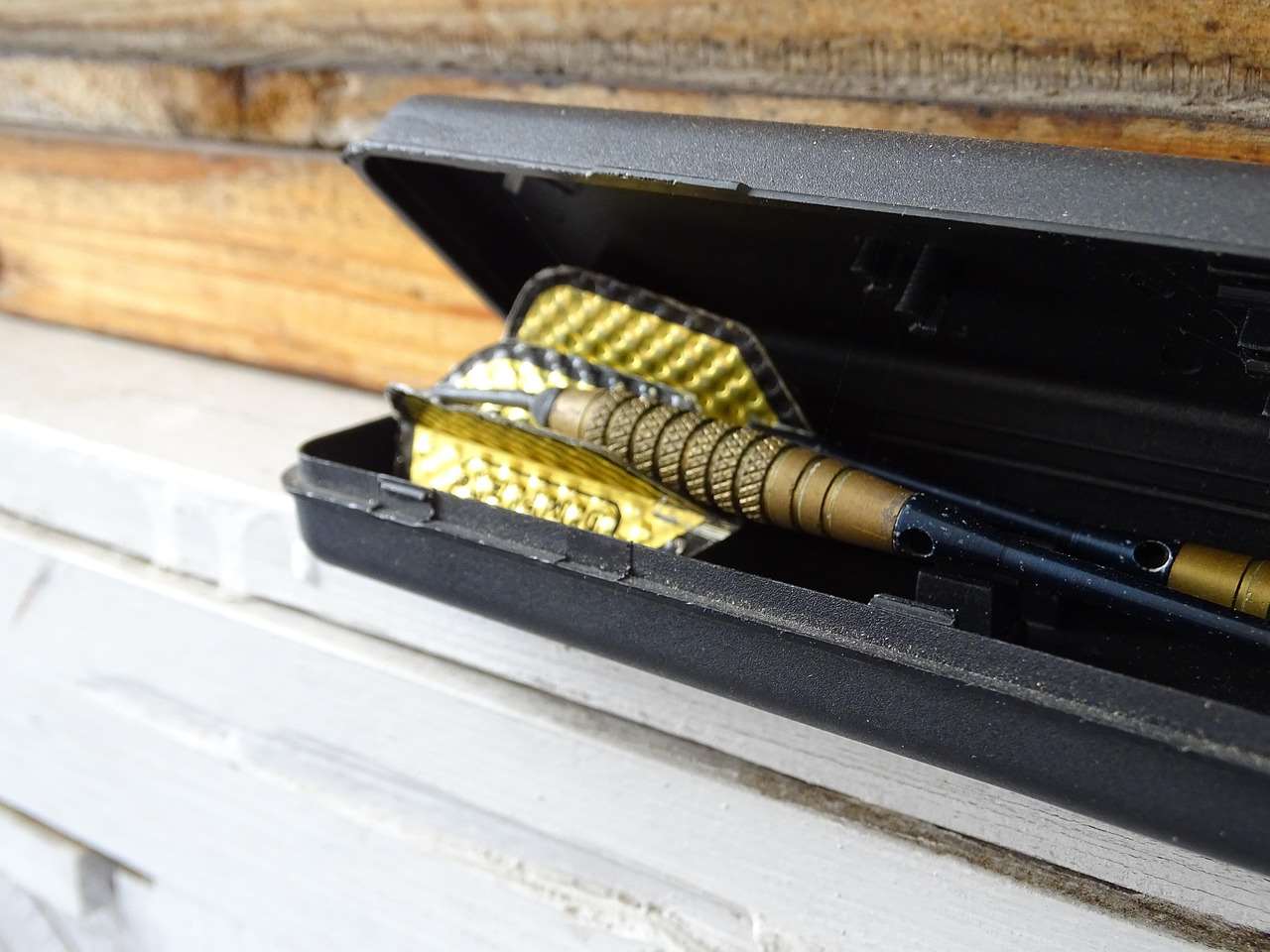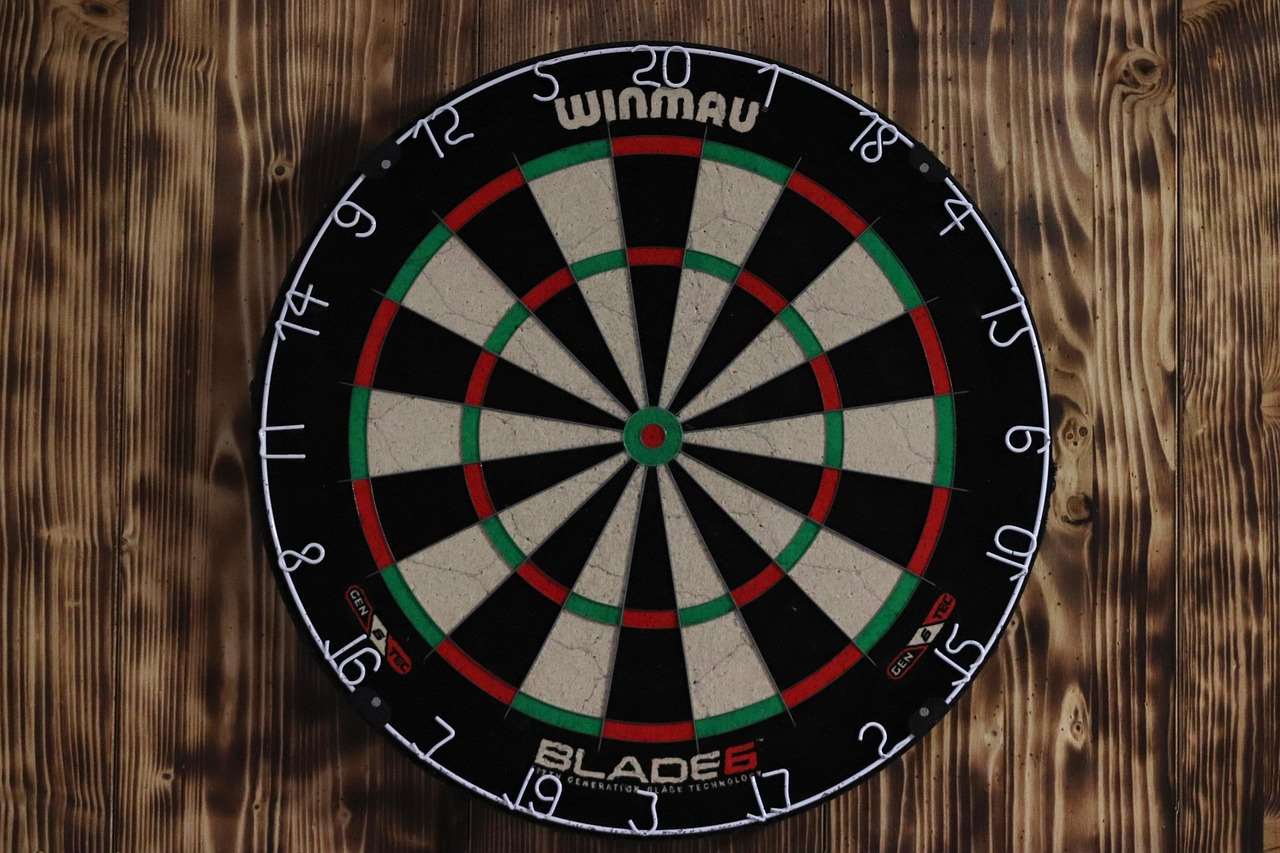Understanding the darts scoreboard game is crucial for enjoying and competing in darts, whether you’re playing casually or aiming for a professional level; knowing how to score accurately is fundamental. This article will cover everything from basic scoring rules to advanced strategies, helping you master the art of keeping score and improving your game.
⚠️ Still Using Pen & Paper (or a Chalkboard)?! ⚠️
Step into the future! The Dart Counter App handles all the scoring, suggests checkouts, and tracks your stats automatically. It's easier than you think!
Try the Smart Dart Counter App FREE!Ready for an upgrade? Click above!
Mastering the Basics of the Darts Scoreboard Game
The foundation of any darts scoreboard game is knowing the points assigned to each section of the dartboard. The board is divided into 20 numbered sections, each with single, double, and treble areas, plus a bullseye. Hitting a number in the single area scores that number. Hitting the outer ring scores double the number, and the inner ring scores triple. The bullseye is worth 50 points, and the outer bull (also called the single bull) is worth 25 points. This setup allows for a wide range of scores and complex strategic plays.
The most common darts scoreboard game is 501. Each player starts with 501 points and must reduce their score to zero. The catch? The final dart thrown must land in a double or the bullseye to win. This is known as “doubling out”. Miscalculating your final score can be frustrating, so practice your checkouts!

Essential Rules and Scoring Nuances
Beyond the basic point values, several rules govern how a darts scoreboard game is played. For example, if a player scores more points than necessary to reach zero (busts), the score for that round is nullified, and the player’s score remains the same. It’s a crucial element of strategy that requires careful calculation. You might find yourself needing a darts checkout calculator!
- Busting: As mentioned above, exceeding the required score to reach zero results in a bust, and no points are scored for that round.
- Starting a Leg: In some variations, players must hit a double to begin scoring in a leg. This adds another layer of challenge.
- Scoring Disputes: Always verify the score with your opponent before removing your darts from the board. Disputes can be avoided with clear communication.
Properly understanding these rules ensures fair play and prevents unnecessary arguments. Mastering these elements is key to excelling at the darts scoreboard game.
Different Variations of the Darts Scoreboard Game
While 501 is the most popular, various other darts scoreboard game variations exist, each with its own set of rules and challenges. Exploring these different games can add variety and fun to your darts sessions.
- 301: A shorter version of 501, often played in quicker matches. The same doubling-out rule applies.
- Around the Clock: Players must hit each number on the board in order, starting with 1 and progressing to 20. The first to complete the circuit wins.
- Cricket: A strategic game where players aim to “close out” specific numbers (20, 19, 18, 17, 16, 15, and the bullseye) by hitting them three times. Once a number is closed, only the player who closed it can score on that number.
Trying different game types can improve your overall darts skills and provide a fresh perspective on the darts scoreboard game. Plus, it keeps things interesting when playing with friends and family!

Tips for Accurate Darts Scoreboard Management
Keeping an accurate darts scoreboard game is essential for fair and enjoyable gameplay. While manual scoreboards are traditional, modern electronic scoreboards and apps can simplify the process and reduce the risk of errors.
- Use a Darts Scorekeeper App: Mobile apps can automatically calculate scores, track stats, and even suggest checkouts. Darts scorekeeper app is a good option.
- Double-Check Manual Scores: If using a manual scoreboard, always double-check the scores after each round to prevent mistakes.
- Designate a Scorekeeper: Assign one person to be responsible for keeping score to ensure consistency.
Effective darts scoreboard game management not only prevents disputes but also allows players to focus on their throws and strategy. Consider different scoring methods to find what works best for you and your playing group.
Strategies for Success in the Darts Scoreboard Game
Winning a darts scoreboard game requires more than just hitting the target. Strategic thinking, mental toughness, and consistent practice are all crucial. Developing a game plan can significantly improve your chances of success.
- Practice Your Checkouts: Knowing common checkout combinations (like 170, 164, 161, etc.) allows you to quickly calculate the best way to finish a leg.
- Aim for the Treble 20: The treble 20 is the highest-scoring single segment and is a primary target for many players.
- Be Consistent: Focus on developing a repeatable throwing motion to improve accuracy. Addressing issues such as why do my dart flights keep coming out will help maintain consistency.
- Mental Toughness: Stay calm and focused, even under pressure. Don’t let bad throws affect your overall performance.

By implementing these strategies and consistently practicing, you can elevate your darts scoreboard game and become a more formidable opponent.
Choosing the Right Darts Scoreboard
The type of darts scoreboard you choose can impact your experience. Options range from traditional chalkboards to electronic scoreboards with advanced features. Understanding the pros and cons of each can help you make an informed decision.
- Chalkboard Scoreboards: Affordable and simple to use, but require manual updating and can be prone to errors.
- Whiteboard Scoreboards: Similar to chalkboards but use dry-erase markers, which can be cleaner and easier to read.
- Electronic Scoreboards: Automatically calculate scores, track stats, and often include game variations. They are more expensive but offer convenience and accuracy.
Consider your budget, playing frequency, and desired features when selecting a darts scoreboard. A good scoreboard can enhance the enjoyment and competitiveness of your games.

Advanced Scoring Techniques in the Darts Scoreboard Game
Once you’ve mastered the basics, you can explore advanced scoring techniques to further refine your darts scoreboard game. These techniques involve strategic targeting and precise calculations.
- Maximizing Score: Aiming for the treble 20 consistently is the fastest way to reduce your score in 501.
- Strategic Bailing Out: When under pressure, knowing where to aim to avoid a bust (e.g., switching to single 19 if you’re close to zero and need a double 20) is crucial.
- Combination Finishes: Mastering common two- and three-dart combinations gives you more flexibility when checking out.
These advanced techniques require dedication and practice but can significantly improve your scoring potential and make you a more versatile player in the darts scoreboard game.
The Mental Game and the Darts Scoreboard Game
The darts scoreboard game isn’t just about physical skill; it also demands a strong mental game. Your ability to stay focused, manage pressure, and strategize under duress can make or break your performance.
- Visualization: Mentally rehearse your throws and imagine hitting your targets.
- Positive Self-Talk: Encourage yourself with positive affirmations and focus on your strengths.
- Mindfulness: Stay present in the moment and avoid dwelling on past mistakes.
Cultivating a positive and resilient mental attitude can enhance your consistency and decision-making abilities, allowing you to perform at your best in the darts scoreboard game.

Practice Drills to Improve Your Darts Scoreboard Game
Consistent practice is the key to improving your skills in any darts scoreboard game. Incorporating targeted drills into your routine can help you focus on specific areas of your game and accelerate your progress. The dart board for sale may not be the latest, but it will still get you practicing.
- Checkout Practice: Focus on common checkout combinations (e.g., 40, 60, 81, etc.) to improve your finishing ability.
- Around the World: Hit each number on the board in sequence to improve your accuracy on different targets.
- Treble 20 Challenge: Aim for the treble 20 repeatedly to improve your consistency on your primary target.
By dedicating time to structured practice, you can solidify your fundamentals and enhance your overall performance in the darts scoreboard game. Remember that even short, focused practice sessions can be more effective than long, unfocused ones.
Conclusion
Mastering the darts scoreboard game involves understanding the rules, practicing consistently, and developing a strategic mindset. Whether you choose to play the classic 501 or explore other variations, the key is to have fun and continually strive to improve your skills. From accurately managing the dart point diameter to understanding advanced scoring techniques, every aspect contributes to your overall performance. Start practicing today and watch your game soar! Ready to take your game to the next level? Grab your darts and hit the board!
Hi, I’m Dieter, and I created Dartcounter (Dartcounterapp.com). My motivation wasn’t being a darts expert – quite the opposite! When I first started playing, I loved the game but found keeping accurate scores and tracking stats difficult and distracting.
I figured I couldn’t be the only one struggling with this. So, I decided to build a solution: an easy-to-use application that everyone, no matter their experience level, could use to manage scoring effortlessly.
My goal for Dartcounter was simple: let the app handle the numbers – the scoring, the averages, the stats, even checkout suggestions – so players could focus purely on their throw and enjoying the game. It began as a way to solve my own beginner’s problem, and I’m thrilled it has grown into a helpful tool for the wider darts community.